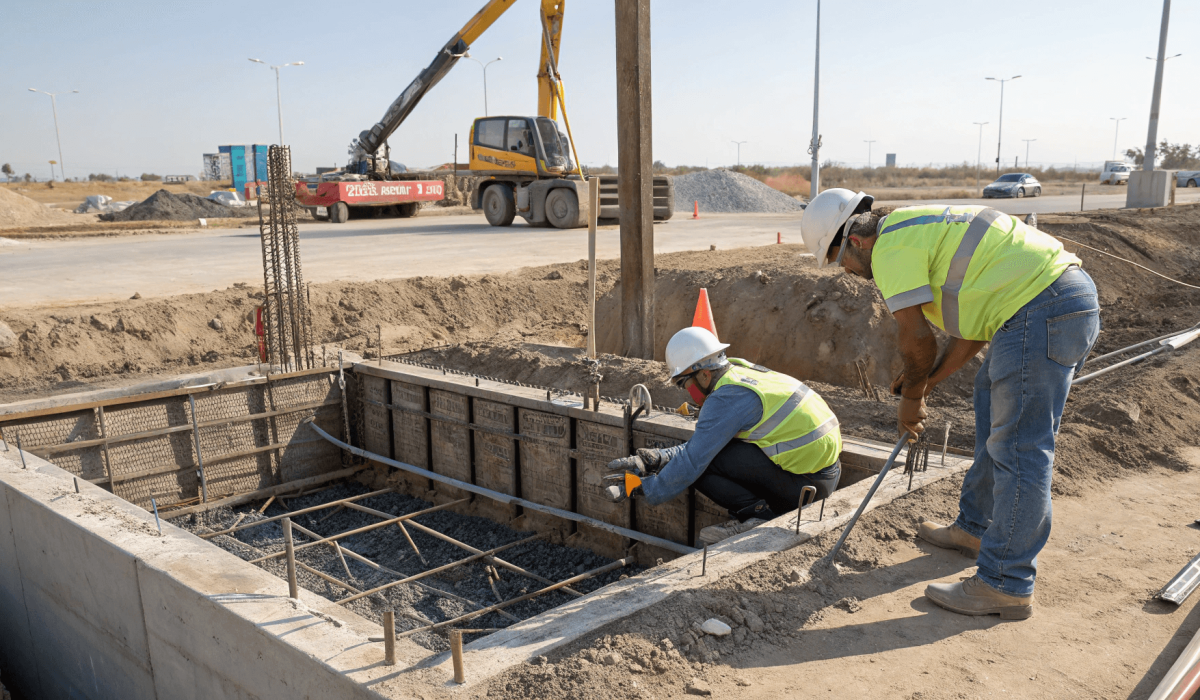A strong foundation is essential for the stability and longevity of solar street lights. Poor foundation design can lead to tilting, sinking, or pole failure.
Different soil types require customized foundation solutions to ensure durability and resistance to environmental factors.
A well-prepared foundation ensures the structural integrity of solar street lights, reducing maintenance costs and enhancing safety. This guide covers key factors, standard construction steps, and solutions for different soil conditions.
Key Factors Affecting the Foundation of Solar Street Lights
Various environmental and structural factors determine the required foundation type.
- Soil Type & Stability: The foundation depth and materials depend on whether the soil is sandy, clay, gravel, or rock.
- Wind Load & Weather Conditions: High-wind areas or frequent storms require deeper and reinforced foundations.
- Pole Height & Weight: Taller poles with larger solar panels exert more force and need stronger support.
- Installation Environment: Urban, rural, coastal, and mountainous terrains influence foundation design.
Standard Foundation Construction for Solar Street Lights
A proper foundation consists of multiple structural components for stability.
Basic Foundation Components
- Concrete base
- Anchor bolts
- Steel reinforcement
- Protective layers for corrosion resistance
General Installation Steps
- Excavation: Dig a hole according to the required depth and width.
- Reinforcement Placement: Install anchor bolts and steel rods.
- Pouring Concrete: Use a high-strength concrete mix for stability.
- Curing Process: Allow concrete to set for at least 48–72 hours.
- Pole Installation: Secure the street light pole with bolts.
Foundation Construction Solutions for Different Soil Types
Soil conditions dictate the appropriate foundation design.
Hard Soil & Rocky Terrain
- Characteristics: Stable, solid, requires drilling for installation.
- Recommended Foundation:
- Use a smaller but deeper foundation hole.
- Securely embed anchor bolts in concrete.
- Reinforce with steel rods for additional strength.
Sandy Soil
- Characteristics: Loose and shifts easily, requires extra support.
- Recommended Foundation:
- Use a wider and deeper foundation with a strong concrete mix.
- Embed a steel cage to prevent soil displacement.
- Add gravel layers at the bottom to improve drainage.
Clay Soil
- Characteristics: Expands and contracts with moisture changes, causing instability.
- Recommended Foundation:
- Increase foundation depth to at least 1.5 meters.
- Use additional drainage layers (gravel or sand) to prevent water retention.
- Reinforce with deep anchor bolts and waterproof coatings.
Wetlands & Flood-Prone Areas
- Characteristics: High water table, weak soil strength.
- Recommended Foundation:
- Use pile foundations or helical piers instead of standard concrete bases.
- Ensure proper water drainage to prevent soil erosion.
- Use corrosion-resistant materials for long-term durability.
Loose Gravel & Unstable Soil
- Characteristics: Poor load-bearing capacity, risk of shifting.
- Recommended Foundation:
- Compact the soil before construction.
- Use a larger foundation diameter to distribute weight evenly.
- Apply reinforced mesh to stabilize the base.
Additional Tips for Long-Term Stability
Following best practices enhances foundation durability and reduces future repair costs.
- Use high-quality concrete mix (M20 or M25 grade) for durability.
- Always check local regulations and engineering standards before installation.
- For high-wind zones, increase foundation depth and use guy wires if necessary.
- Conduct regular maintenance and inspections to detect any foundation movement or cracks.
Conclusion: Choosing the Right Foundation for Solar Street Lights
A well-built foundation is crucial for the safety and longevity of solar street lights.
Selecting the right construction method based on soil conditions ensures structural stability. Proper planning, reinforcement, and waterproofing help avoid future repairs and failures.




